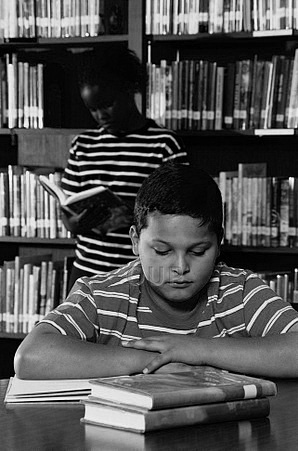 In his first guest post, David Dodgson, a teacher to young learners in Ankara, Turkey, gives his advice on how choose a Graded Reader that is not only suitable for young language learners, but will also motivate them to read more.
In his first guest post, David Dodgson, a teacher to young learners in Ankara, Turkey, gives his advice on how choose a Graded Reader that is not only suitable for young language learners, but will also motivate them to read more.
Stories are undoubtedly an important part of children’s literacy development. They offer a rich source of vocabulary and familiarity with narrative structure. In the classroom, they can also add colour to a lesson and provide motivation for kids to read more. However, reading in a second language is a complex process, especially when dealing with young learners, and the stories and books we use need to be carefully considered.
Before reading on, just take a moment to consider what criteria you or your school use for choosing readers for primary aged learners (if you haven’t selected any storybooks for use in class before, think about what those criteria might be). What is your main consideration?
Ready? Good. Now, I may be wrong (let me know in the comments section if I am) but in my experience, most teachers’ first thought will be “Is it at the right level for my students?” and by the ‘level’, they usually mean the language level. An analysis of the grammatical structures in the book, the vocabulary and number of words will then follow. Increasingly, the exam level the book is said to be suitable for is also a factor as schools look to support children in preparation for tests such as Starters, Movers and Flyers.
But look at the above paragraph again and something seems to be missing, something fundamental to any storybook. That’s right – the story! While the above considerations are important, I can’t help but feel the content is often overlooked or a secondary factor. The plot, the characters and the theme should all be relevant to and engaging for the age group. If they enjoy the story and like the characters, they are much more likely to be motivated to read.
Another important factor is the age of the learners. There is little point in introducing a lengthy story in a foreign language to very young children who are still struggling to read in their L1. This may sound paradoxical, but authentic picture books can be best for this age group as the stories are straightforward with repetitive language and detailed pictures offering rich context. If read aloud by the teacher, the storytelling experience can be a great way to engage young children in the target language (see Carol Read’s excellent S is for Storytelling post for more on this). Older children – Cameron (2001) suggests from about 10 years of age – are better suited to larger texts and this is where graded readers can play a role. The right reader offers a way for them to read longer stories without being bogged down by overly-complex language.
The grammar and vocabulary content of the books should be a lesser consideration when selecting a reader. Of course, too much unknown language can put off budding readers but we need to avoid the trap of over-simplification as well. The readers used should be a little above the students’ level and push them to learn more. After all, as I said at the start of this post, stories are a rich source of new vocabulary for children and as long as the new words are supported by clear illustrations and context, they won’t cause a problem. Stories should also offer a chance to introduce narrative tenses and on this point I agree with Cameron (ibid.) – using present tenses robs young learners of a chance to see past forms in natural use. There is no reason that use of tenses not yet formally introduced would impair understanding of a story, especially as past tenses for narration are a feature of the vast majority of languages.
What are your criteria for choosing storybooks and readers? Do you place more importance on the content or the suitability of the language? What’s your position on use of simplified and narrative tenses? I invite you to join the discussion through the comments.


Thank you for this post Dave:) You gave very useful tips for those teachers who use graded readers either in the classroom or as assigned homework. Personally I encourage my ss (the small ones and the bigger ones) to read as much as possible and starting with graded readers is a great idea:)
Hi Ania,
Thanks for taking the time to comment. To tell the truth, for quite a long time I wasn’t a fan of graded readers. They always seemed to be iether way too simple or way too hard and often failed to capture the students’ attention. I later came to realise the problem was the manner in which readers were being selected. Luckily, this year both readers my classes are using have been well-received despite the fact that they are a little above the kids’ level. With the right support, they can still enjoy the story (but more on that in another post ;)).
[…] given us some advice on choosing a reader, David Dodgson, a teacher to young learners in Ankara, Turkey, now introduces us to some […]